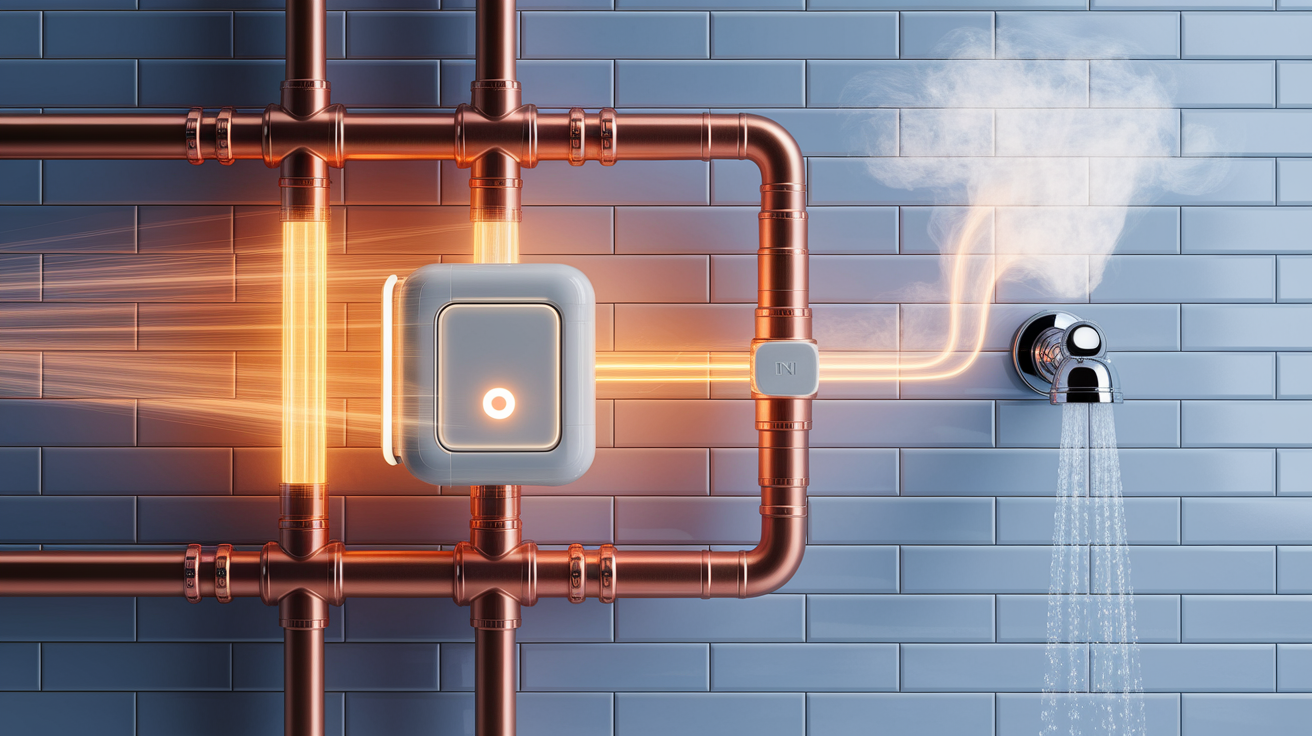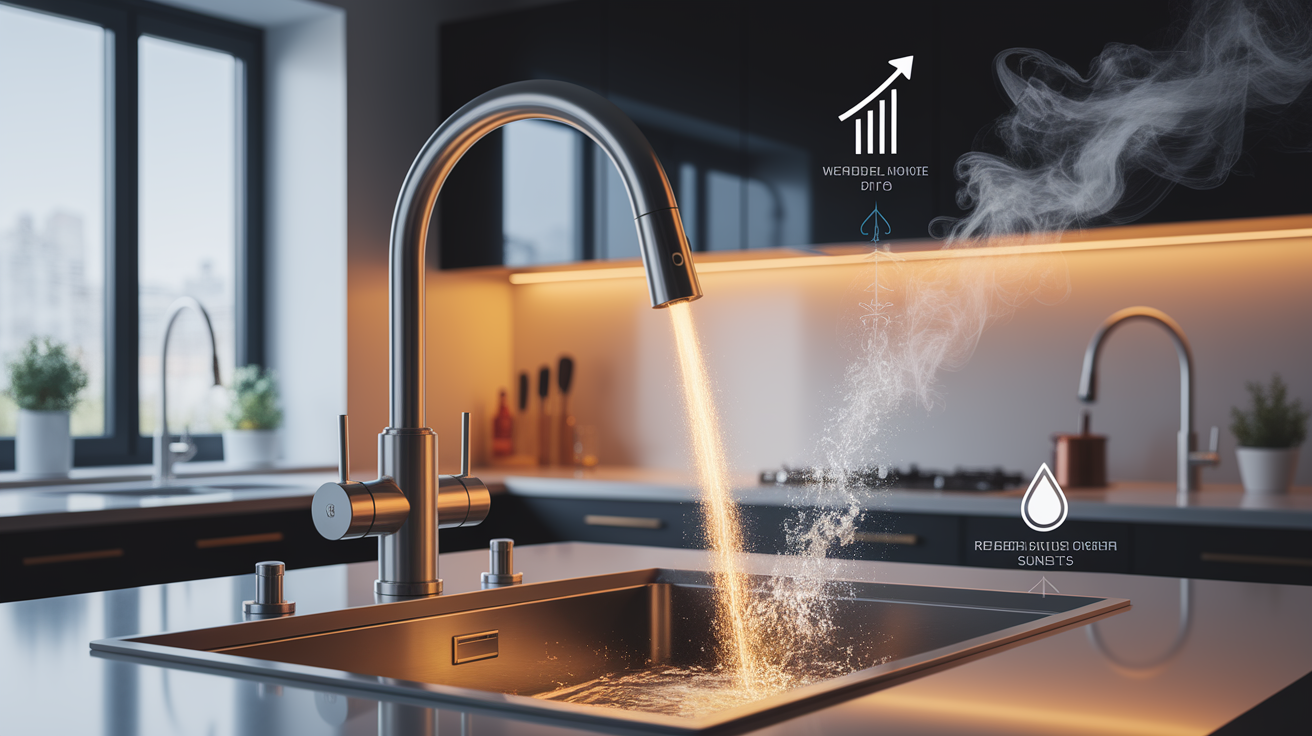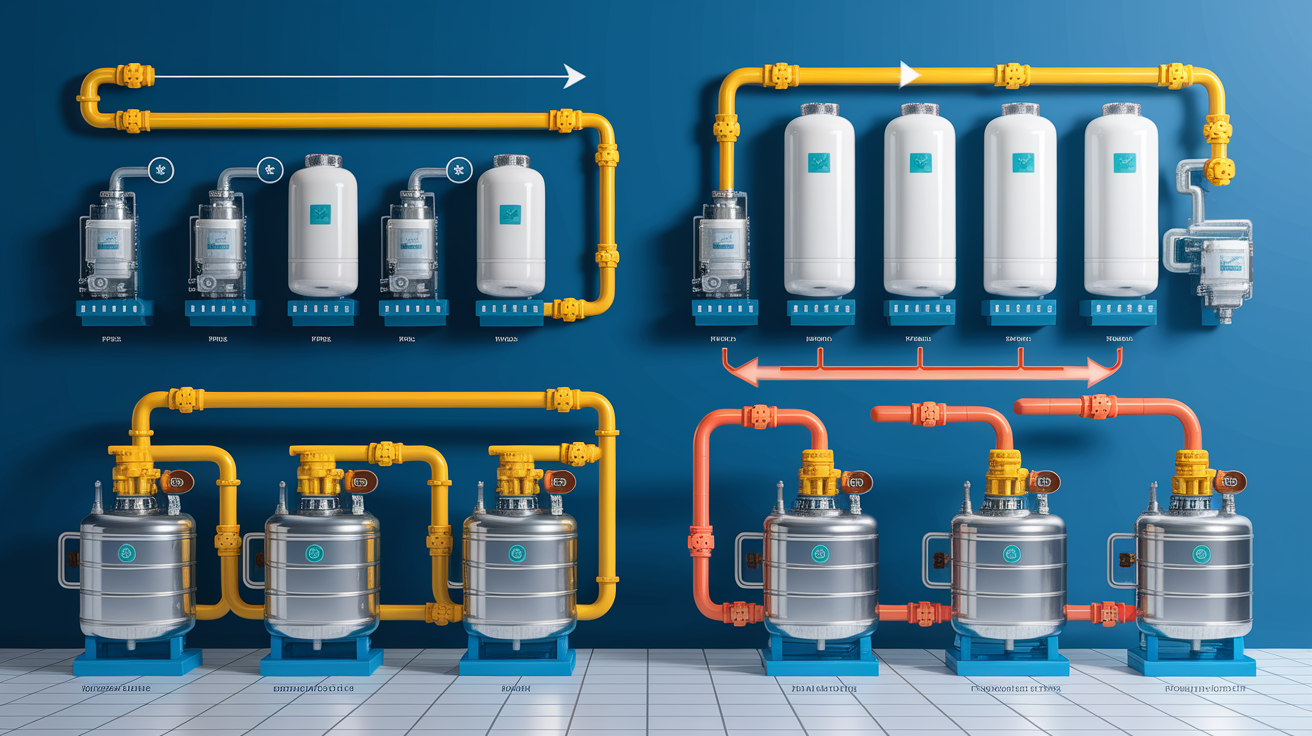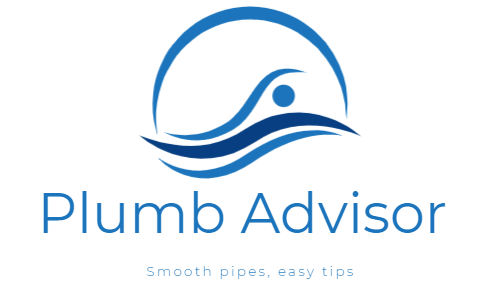If you’ve ever stood at your kitchen sink waiting for hot water to arrive, you know the frustration of wasted time and water. While tankless water heaters offer energy efficiency and endless hot water, they don’t solve the delay issue on their own. That’s where a recirculation pump comes in—a game-changing addition that can deliver instant hot water throughout your home.
Hot Water, No Wait: Defining a Recirculation Pump
A recirculation pump for tankless water heaters is a specialized device designed to ensure hot water is always available at your taps by continuously circulating heated water through your home’s plumbing system. This eliminates the frustrating wait time for hot water to travel from your tankless unit to distant fixtures, while also reducing both energy and water consumption.

Unlike traditional tank water heaters that store hot water, tankless systems heat water on demand. However, this means water sitting in the pipes between your heater and fixtures cools down when not in use. A recirculation pump solves this problem by keeping hot water moving through the system, creating a continuous circulation system that maintains optimal water temperature throughout your plumbing network.
The pump works as part of your overall hot water on demand system, ensuring that when you turn on a faucet, shower, or appliance, hot water is immediately available rather than requiring you to wait for the tankless heater to warm up the water in the pipes.
How Recirculation Pumps Work with Tankless Heaters
Understanding how tankless recirculation works helps homeowners appreciate the engineering behind instant hot water delivery. A recirculation pump operates by continuously circulating water from the hot water line back to the tankless water heater. This constant flow ensures that water in the pipes doesn’t have time to cool down, providing instant hot water whenever needed.

Here’s the step-by-step process:
- Water Circulation: The pump draws hot water from your tankless heater through the hot water lines
- System Loop: Hot water travels through your home’s plumbing to the furthest fixtures
- Return Path: Cooled water returns to the tankless heater through either a dedicated return line or the cold water line
- Continuous Cycle: The process repeats, maintaining hot water throughout the system
This mechanism speeds up the delivery of hot water to outlets and prevents the waste of water that would normally go down the drain while waiting for hot water to arrive. The system can be controlled by timers, temperature sensors, or manual switches, depending on your specific setup and preferences.
It’s worth noting that proper water pressure throughout your system is crucial for optimal performance. If you’re experiencing complex water pressure issues, addressing these problems alongside your recirculation pump installation will ensure the best results.
Why Add a Recirculation Pump? Key Benefits
The benefits of installing a recirculation pump on a tankless water heater extend far beyond convenience. Here are the key advantages that make this upgrade worthwhile for most homeowners:

Instant Hot Water Delivery
The primary benefit is eliminating hot water delay entirely. Instead of waiting 30-60 seconds (or longer in large homes) for hot water to reach distant fixtures, you’ll have immediate access to hot water at every tap and shower.
Reduced Water Waste
By maintaining hot water throughout the system, recirculation pumps significantly reduce water waste. The average household can save hundreds of gallons annually by not having to run water while waiting for it to heat up.
Enhanced Energy Efficiency
While the pump uses some electricity, modern demand-based systems actually improve overall tankless heater efficiency by reducing the frequency of heating cycles and maintaining consistent temperatures throughout the plumbing network.
Improved Comfort and Convenience
Morning showers become more pleasant when hot water is immediately available. The comfort system for hot water delivery transforms your daily routines by eliminating temperature fluctuations and wait times.
Increased Home Value
Installing a recirculation pump adds a premium feature to your home’s plumbing system, potentially increasing property value and appeal to future buyers who value modern convenience features.
Popular Recirculation System Types
When considering different types of recirculation pumps available for tankless heaters, homeowners have several options, each with distinct operational characteristics and energy consumption patterns.

Traditional Recirculating Pumps
Traditional recirculating pumps operate continuously, maintaining a constant flow of hot water throughout your plumbing system. These systems ensure immediate hot water availability at all fixtures but consume more energy due to their continuous operation. They’re ideal for homes with high hot water usage or multiple family members with varying schedules.
Key Features:
- 24/7 operation for instant hot water
- Simple installation and operation
- Higher energy consumption
- Best for large households or commercial applications
Demand-Based Recirculating Pumps
Demand-based recirculating pumps activate only when hot water is needed, using sensors, timers, or manual switches to detect usage and reduce energy consumption. These systems offer an excellent balance between convenience and efficiency.
Available Control Options:
- Timer Controlled Pump: Operates during preset hours when hot water usage is expected
- Aquastat Controlled Pump: Uses temperature sensors to activate when pipe temperatures drop
- Motion-Activated Systems: Detect movement near fixtures and pre-circulate hot water
- Push-Button Systems: Allow users to manually activate circulation before use
Branded Options
Popular manufacturers like Grundfos, Laing, and Watts offer various models designed specifically for tankless water heater integration. These brands provide reliable pumps with different flow rates, control options, and energy efficiency ratings to match various home sizes and usage patterns.
Installation Essentials and Maintenance
Installing a recirculation pump involves choosing between two main system types, each with different complexity levels and costs. Understanding these options helps homeowners make informed decisions about which approach works best for their situation.
Full Recirculation Pump System
A full recirculation pump system requires additional piping to create a ‘hot water loop’ that ensures water doesn’t sit cold in pipes. This system provides the most efficient operation but involves more complex installation.
Installation Requirements:
- Dedicated return line from the furthest fixture back to the water heater
- Professional plumbing installation in most cases
- Higher upfront costs due to additional piping
- Best long-term efficiency and performance
Recirculation Pump Comfort System
A recirculation pump comfort system can be installed without additional piping, using the existing cold-water line for cost-effectiveness. This retrofit option makes recirculation pumps accessible to more homeowners.
Installation Features:
- Uses existing plumbing with a thermal bypass valve
- Lower installation costs
- Suitable for retrofit applications
- Slightly less efficient than full systems but still effective
DIY vs. Professional Installation
While some homeowners can handle comfort system installations, full recirculation systems typically require professional installation. Consider your plumbing experience and local building codes when deciding. Professional installation ensures proper integration with your tankless system and optimal performance.
Similar to how water pressure booster pumps require careful integration with existing plumbing systems, recirculation pumps need proper sizing and installation to function effectively without causing system pressure issues.
Maintenance Requirements
Recirculation pump maintenance is minimal but important for long-term reliability:
- Regular Inspection: Check for leaks, unusual noises, or vibrations monthly
- Timer Settings: Adjust seasonal schedules to optimize energy usage
- System Flushing: Annual flushing helps prevent sediment buildup that could affect both the pump and tankless heater
- Temperature Monitoring: Ensure the system maintains appropriate temperatures without overheating
If your tankless system experiences issues, such as ignition problems, address these before installing a recirculation pump to ensure optimal system integration.
Turn Up the Heat: Final Thoughts on Recirculation Pumps
A recirculation pump transforms your tankless water heater from an efficient but sometimes inconvenient system into a true instant hot water solution. By understanding what is a recirculation pump for tankless water heater systems and how different types operate, homeowners can make informed decisions about improving their hot water delivery.
The key considerations for your decision include:
- Home Size: Larger homes with longer pipe runs benefit most from recirculation systems
- Usage Patterns: Families with high hot water demand see the greatest convenience improvements
- Energy Priorities: Demand-based pumps offer the best balance of convenience and efficiency
- Budget: Comfort systems provide a cost-effective entry point, while full systems offer premium performance
Whether you choose a traditional continuous system or a demand-based model, adding a recirculation pump to your tankless water heater eliminates the wait for hot water while maintaining the energy efficiency benefits of on-demand heating. For most homeowners, this upgrade pays for itself through water savings, improved convenience, and enhanced home comfort.
Consider consulting with a plumbing professional to determine the best recirculation pump type and installation method for your specific home and usage patterns. With proper selection and installation, you’ll enjoy instant hot water throughout your home while maintaining your tankless system’s efficiency advantages.








